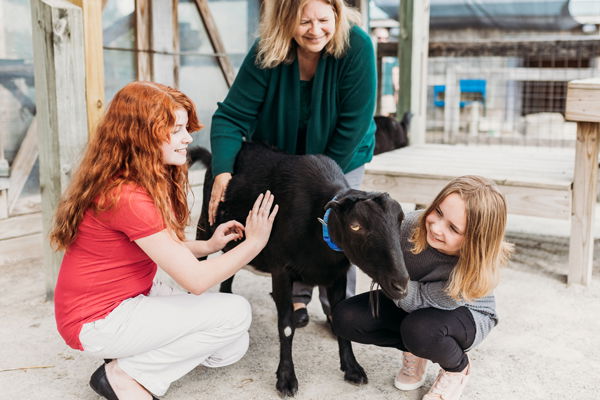Domestic Goat
Today’s ~300 breeds of domestic goats descended from the wild goats of Eurasia.
Day of Creation: six
Biblical Kind: goat/sheep (includes sheep, goats, musk oxen, takins, tahrs, turs, markhors, ibex, serows, gorals, and chamois)
Status: domesticated
Height: 1–4 feet at the shoulder (0.3–1.2 meters)
Weight: 60–300 pounds (27–136 kilograms)
Habitat: eastern Europe and southwest Asia, but domesticated worldwide
Lifespan: 10–15 years
Diet: grasses, shrubs, leaves, vines, fruits
Family Life: live in herds
Reproduction: 1–4 kids are born after five-month gestations
Fun Facts
Domestic goats have been raised for milk, meat, fur, and skins for thousands of years. They also make excellent pets as they are highly intelligent, curious, and hardy animals that can thrive in almost any environment. People have selectively bred goats for a variety of unique colors, hair types, body shapes, and purposes.
Goats vary greatly in size. The smallest breed is the pygmy goat, which stands less than two feet (0.6 meters) at the shoulder and weighs less than 100 pounds (45 kilograms). The tallest breeds, like the Damascus and Jamnapari goats, may stand over four feet (1.2 meters) tall, while the heaviest breeds, like the Boers and Kikos, may weigh over 300 pounds (136 kilograms).
Species in the goat/sheep kind have horizontal pupils, which rotate to remain level with the horizon even when their heads are lowered. This allows them to retain excellent views of their surroundings while grazing. As prey animals, this gives them an extra edge over potential predators.
Both male and female goats may have horns, beards, and wattles. Their horns act as air conditioners because intricate networks of blood vessels inside will cool their blood and circulate it through the rest of their bodies.
Goats have a reputation for eating almost anything, but that is not true. Goats are quite picky, but they do use their mouths to investigate items.
